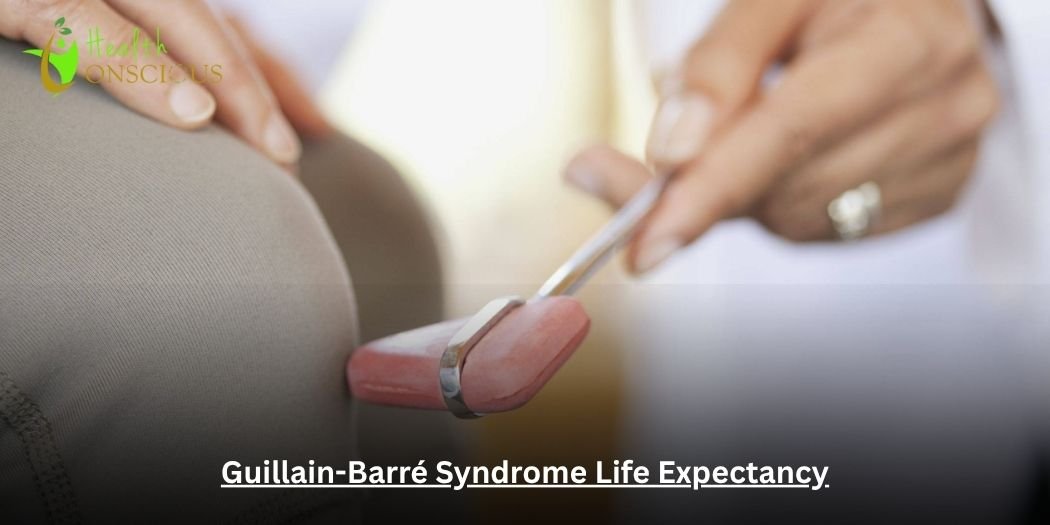Guillain-Barré Syndrome (GBS) is a rare and serious autoimmune disorder where the body’s immune system mistakenly attacks its peripheral nerves. This attack can lead to muscle weakness, numbness, and in severe cases, paralysis. Understanding GBS, its various forms, treatment options, and potential long-term impacts is crucial for patients and their families navigating this challenging condition. Timely detection and early intervention play a crucial role in enhancing recovery chances and overall outlook.
Key Takeaways
- GBS is a rare autoimmune disorder affecting the peripheral nerves, leading to weakness and potential paralysis.
- Prompt diagnosis and treatment with therapies like IVIG or plasma exchange are critical for recovery.
- Recovery time varies significantly, often requiring extensive rehabilitation.
- Most individuals with GBS survive, with factors like age and severity influencing long-term outcomes.
- Long-term effects can include residual weakness or fatigue, but many regain significant function.
What is Guillain-Barré Syndrome (GBS)?
Guillain-Barré Syndrome involves sudden muscle weakness resulting from the immune system targeting the peripheral nerves. This damage to the nerve’s protective myelin sheath or the nerve axon itself disrupts the signals from the brain to the muscles, leading to various degrees of weakness and sensory changes. While GBS can be debilitating, it’s generally a treatable condition, and most people recover, though some may experience lingering effects.
Causes and Risk Factors of GBS
While the exact reason behind GBS is still unknown, it commonly develops following an infection. The immune system, in its fight against the infection, mistakenly targets components of the peripheral nerves.
Common triggers for GBS include:
- Bacterial infections: Campylobacter jejuni is the most frequently identified antecedent infection, accounting for about one-third of GBS cases, according to the National Institute of Neurological Disorders and Stroke (NINDS).
- Viral infections: Influenza, Zika virus, Epstein-Barr virus (mononucleosis), and cytomegalovirus are also known triggers.
- Vaccinations: In very rare instances, certain vaccinations have been linked to GBS, though the risk is extremely low compared to the benefits of vaccination.
- Surgery or trauma: In some cases, GBS may arise following surgery or physical injury.
Understanding GBS Symptoms
GBS symptoms typically begin with weakness and tingling sensations in the legs, which can then spread to the arms and upper body. The progression can be rapid, sometimes over a few hours or days.
Initial signs and progression:
- Weakness or tingling: It usually begins in the feet and legs and gradually advances upward through the rest of the body.
- Difficulty with coordination and balance: Resulting in an unstable walking pattern.
- Severe muscle pain or aches: Most noticeable during nighttime.
Severity and affected areas:
- As the syndrome progresses, muscle weakness can intensify, leading to difficulty walking, climbing stairs, or even standing.
- In severe cases, GBS can affect muscles involved in breathing, leading to respiratory failure, and can also impact blood pressure and heart rate.
The 4 Main Types of Guillain-Barré Syndrome
While GBS is an umbrella term, it encompasses several variants, each with distinct characteristics regarding the type of nerve damage. Identifying these variants is essential for proper diagnosis and personalized treatment strategies.
Acute Inflammatory Demyelinating Polyneuropathy (AIDP)
AIDP is the dominant type of GBS in Western countries, accounting for nearly 85-90% of cases across North America and Europe. In AIDP, the immune system primarily attacks the myelin sheath, the fatty covering that insulates nerve fibers and helps transmit electrical signals efficiently.
Damage to myelin slows down nerve impulses, leading to the characteristic muscle weakness and sensory disturbances. This condition usually causes gradually worsening, symmetrical weakness that begins in the legs and moves upward.
Acute Motor Axonal Neuropathy (AMAN)
AMAN is more prevalent in Asian and Latin American countries and is characterized by a direct immune attack on the motor axons themselves, rather than the myelin sheath. This variant primarily affects the nerves that control muscle movement, resulting in significant muscle weakness, but with little to no sensory loss.
AMAN is frequently associated with Campylobacter jejuni infection and can lead to rapid onset and severe paralysis, sometimes requiring ventilatory support.
Acute Motor and Sensory Axonal Neuropathy (AMSAN)
AMSAN is a more serious form marked by widespread injury to motor and sensory nerve fibers. This means that both muscle movement and sensation are significantly impaired. Due to the widespread axonal damage, AMSAN often has a more severe clinical course and a slower, less complete recovery compared to AIDP or pure AMAN. Patients with AMSAN may experience profound weakness and sensory loss.
Miller Fisher Syndrome (MFS)
MFS is a rare variant of GBS, often considered a distinct syndrome or an overlap syndrome. This disorder is recognized by a distinctive set of three symptoms:
- Ophthalmoplegia (eye muscle paralysis causing double vision)
- Ataxia (impaired coordination causing imbalance)
- Areflexia (lack of deep tendon reflexes)
MFS is closely linked to anti-GQ1b antibodies in the bloodstream that attack particular parts of the cranial nerves. While limb weakness can occur, it’s typically less prominent than in other GBS variants.
Diagnosing Guillain-Barré Syndrome
Early diagnosis of GBS can be difficult because its symptoms often resemble those of other neurological disorders. A combination of tests is usually employed.
Diagnostic tests and procedures include:
- Neurological examination: Evaluation involves checking muscle strength, reflex responses, and sensory perception.
- Lumbar puncture (spinal tap): Analysis of cerebrospinal fluid often shows elevated protein levels with few white blood cells, a classic finding in GBS.
- Nerve conduction studies and electromyography (NCS/EMG): These tests measure the electrical activity of nerves and muscles, helping to identify nerve damage and distinguish GBS from other disorders.
Guillain-Barré Syndrome Treatments
While GBS has no known cure, treatment aims to lessen its impact, promote faster recovery, and control the symptoms. Early intervention with these immunotherapies is critical to achieve the best possible outcomes.
Intravenous Immunoglobulin (IVIG) Therapy
IVIG therapy involves administering a high dose of healthy antibodies intravenously. The exact mechanism by which IVIG works in GBS is complex, but it is thought to neutralize the harmful antibodies that are attacking the peripheral nerves or to block their damaging effects.
This treatment is generally as effective as plasma exchange and is often favored due to its non-invasive nature and relative ease of administration, typically given over several days.
Plasma Exchange (Plasmapheresis)
Plasmapheresis, also known as plasma exchange, is a treatment method that eliminates damaging antibodies from the bloodstream. In the process of plasmapheresis, blood is taken from the patient and processed through a device that extracts plasma — the fluid part containing antibodies — separating it from the blood cells. After removal, the plasma is discarded, and the remaining blood cells are mixed with a substitute fluid, like albumin or donated plasma, before reentering the patient’s bloodstream. This process effectively reduces the level of circulating antibodies that are damaging the nerves.
Supportive Care and Management
Supportive care is a cornerstone of GBS management, especially for severe cases. This requires close observation of essential bodily functions, especially breathing, since weakness in respiratory muscles may result in serious, potentially fatal complications. Patients may require mechanical ventilation if their breathing becomes compromised. Managing pain is equally important, as nerve-related discomfort can be intense. Additionally, supportive care includes preventing complications associated with immobility, such as deep vein thrombosis (blood clots) and pressure sores, and managing autonomic dysfunction that can affect heart rate and blood pressure.
For those seeking complementary approaches to immune-related conditions, exploring the Autoimmune Protocol diet may provide additional dietary support.
Guillain-Barré Syndrome Recovery Time and Rehabilitation
Recovery from GBS can be a long and challenging process, with recovery times varying widely among individuals.
Typical recovery phases:
- Initial deterioration: Symptoms worsen over days or weeks.
- Plateau phase: Symptoms stabilize.
- Recovery phase: Slow recovery may take place over several weeks, months, or in some cases, years. About 80% of GBS patients are able to walk independently six months after onset, as reported by the GBS|CIDP Foundation International.
Importance of physical and occupational therapy:
- Physical therapy: Crucial in helping restore muscle strength, mobility, and coordination.
- Occupational therapy: Helps individuals relearn daily activities and adapt to any persistent limitations.
- Speech therapy: May be necessary if GBS affects the muscles responsible for speech or swallowing.
Guillain-Barré Syndrome Life Expectancy: Long-term Outlook
Although GBS is a severe disorder, most people can recover and survive. However, the outlook and chances of lasting effects may differ among individuals.
Survival rates and prognosis:
- The death rate linked to GBS is fairly low, usually falling between 3% and 5%. Improved medical care, especially in intensive care units (ICU) for respiratory support, has significantly improved survival.
Factors influencing life expectancy:
- Age: Elderly individuals might face a somewhat increased risk of complications.
- Severity of illness: Those with more severe paralysis or respiratory involvement face greater challenges.
- Early treatment: Prompt administration of IVIG or plasma exchange can significantly improve outcomes and potentially reduce the severity and duration of the illness.
Long-term effects and quality of life Post-GBS:
- Although many people achieve full or near-full recovery, a few may continue to face residual problems.
- Such issues might involve ongoing fatigue, slight weakness, tingling, or discomfort.
- The overall quality of life post-GBS is generally good for the majority, with ongoing rehabilitation and adaptive strategies helping to manage any residual effects.
Potential Complications of GBS
Despite generally favorable outcomes, GBS can lead to several potential complications:
- Respiratory failure: The most serious complication, requiring mechanical ventilation.
- Cardiac issues: Changes in heart rate and blood pressure levels.
- Blood clots: Due to immobility.
- Recurrence: While rare, GBS can recur in about 3% of cases.
- Chronic GBS: A small percentage of individuals may develop chronic inflammatory demyelinating polyneuropathy (CIDP), a more persistent form of nerve inflammation.
Living with Guillain-Barré Syndrome
Living with GBS, especially during the recovery phase, requires patience, resilience, and a strong support system. Becoming part of support groups or engaging with fellow GBS survivors can offer vital emotional comfort and useful guidance. Maintaining a positive outlook and adhering to rehabilitation plans are key components of a successful recovery journey.
Final Thoughts
Guillain-Barré Syndrome is a complex neurological disorder that can present significant challenges. Nevertheless, with progress in therapies and rehab approaches, the future has become much brighter for GBS patients. Early recognition of symptoms, prompt diagnosis, and access to specialized care are paramount for maximizing recovery and minimizing long-term disability.
Though recovery can be challenging, most people with GBS eventually regain their independence and enjoy a fulfilling life.
FAQ
Is Guillain-Barré Syndrome a permanent condition?
No, GBS is generally not a permanent condition. Most people recover fully or largely, though some may experience mild, long-term residual symptoms like weakness or fatigue.
What is the most effective treatment for GBS?
IVIG therapy and plasma exchange (plasmapheresis) are the leading treatments for GBS, helping eliminate or block the damaging antibodies.
How long does it take to recover from Guillain-Barré Syndrome?
Recovery time varies significantly. Recovery may span several weeks to many months, and in some cases, over a year — depending on how severe the condition is.
Can Guillain-Barré Syndrome be prevented?
Currently, there is no known way to prevent GBS as its exact cause is not fully understood. Still, practicing proper hygiene lowers the likelihood of typical infections that could set it off.
What are the early signs of GBS?
Early signs of GBS often include tingling or weakness starting in the feet and legs, which then progresses upwards, and can be accompanied by unsteadiness or difficulty walking.
Does GBS affect life expectancy?
Although GBS is a severe disorder, most people are able to recover and survive. The mortality rate is low (3-5%), and early, effective treatment significantly improves the prognosis and life expectancy.


